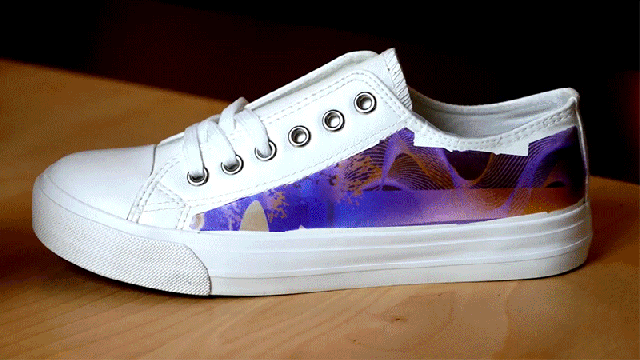Taking inspiration from creatures like chameleons who are masters of colour-changing camouflage, researchers at MIT’s Computer Science & Artificial Intelligence Laboratory (CSAIL) have developed a new spray-on ink that can infinitely change colours, designs, and patterns when blasted with different wavelengths of light.
The system, which the researchers have called PhotoChromeleon, uses a series of photochromic dyes (which work similarly to glasses that automatically darken in the presence of sunlight) that can be applied to almost any object using standard painting methods like brushes or sprays.
The ink was created by mixing cyan, magenta, and yellow photochromic dyes together to create a single solution that works like paint, but one that’s invisible until exposed to a very specific light show.
Each of the coloured dyes reacts to different wavelengths of light, so by using three different light sources, the researchers were able to selectively activate and deactivate the three different ink colours to produce specific shades, complex patterns, and even high-resolution images.
Once an object, like a shoe or a smartphone case, has been coated with the ink, it’s placed in a box with a projector and a UV light. The projector shines pre-determined images and patterns onto the object in different wavelengths to activate the colours in the ink, while the UV light resets the ink, essentially erasing all the colours and designs.
Depending on the size and shape of the object, and the complexity of the coloured design being reproduced, the activation process can take anywhere from 10 to 40 minutes.
The CSAIL researchers are still looking to recreate photochromic dyes that match all the colours used in modern printing processes. Right now they’re close, but not all the way there so printing something like a photo onto a shoe produces results with a weird tint.
The team is looking to collaborate with material scientists to help improve the colour spectrum of their dyes which would open the product up to countless applications from camouflage for a military vehicle that could be updated in the field to match new environments, to clothing that could be easily customised to match an existing outfit, to even changing the colour of your car when you get bored of its current shade.
